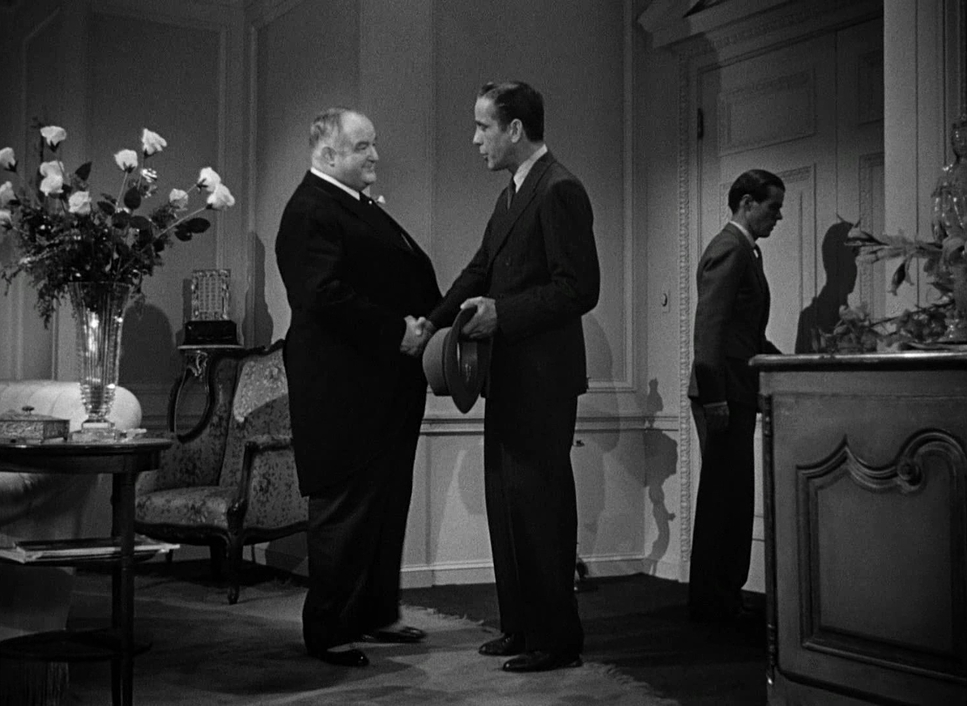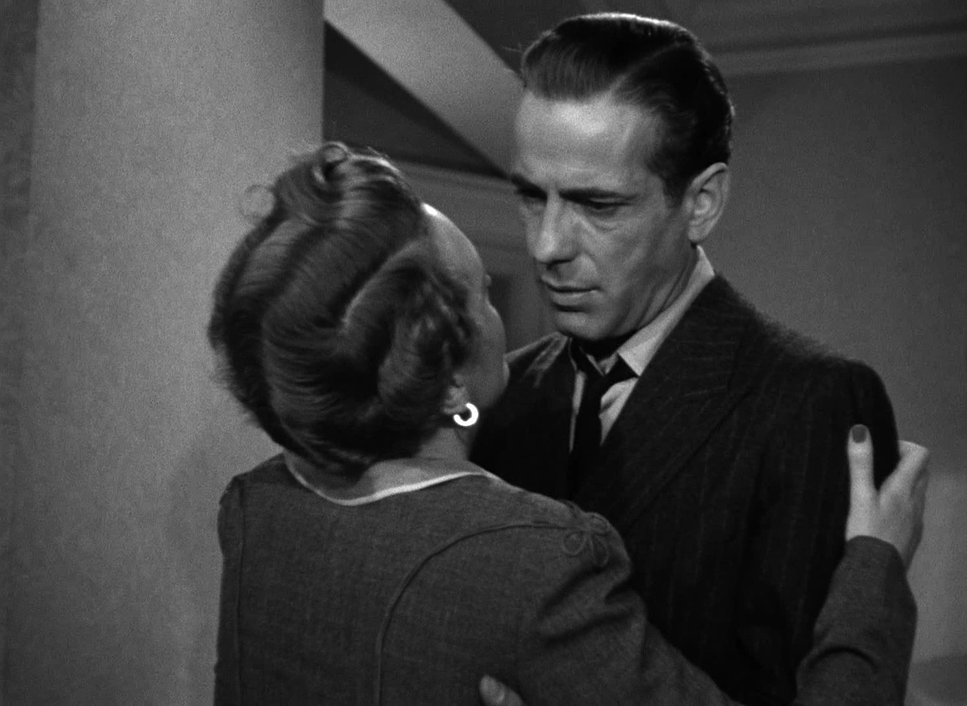As the owner of a post-production color grading suite, I’ve spent countless hours immersed in the art of visual storytelling. Color grading isn’t just my profession; it’s my passion. The interplay of light, shadow, and color has always fascinated me, and I find myself drawn to films that masterfully utilize these elements. One such film is The Maltese Falcon (1941), a cornerstone of the film noir genre, directed by John Huston. In this article, I delve into its cinematography, exploring how it continues to inspire filmmakers and colorists like myself.
About the Cinematographer

The brilliance of The Maltese Falcon‘s cinematography can be attributed to Arthur Edeson, a luminary in Hollywood’s early days. Edeson was already renowned for his pioneering work on films like Frankenstein (1931) and All Quiet on the Western Front (1930). His expertise in manipulating lighting and camera techniques laid the foundation for what we now recognize as the classic film noir visual style. In this film, Edeson transformed a straightforward detective story into an iconic cinematic experience through his mastery of shadows, depth, and composition. His work set a benchmark for generations of noir films to come.
Inspiration for the Cinematography of The Maltese Falcon

The film draws heavily from German Expressionism, an artistic movement that profoundly influenced Hollywood’s emerging noir aesthetic. The stark contrasts, dramatic shadows, and use of silhouettes in The Maltese Falcon echo the visual style of expressionist classics like The Cabinet of Dr. Caligari. This visual language, combined with the existential themes prevalent in post-Depression America, created the perfect storm for the development of film noir.
Director John Huston’s vision was instrumental in shaping the film’s cinematography. Recognizing the inherent tension in Dashiell Hammett’s novel, Huston collaborated closely with Edeson to use visuals as a storytelling device. Together, they crafted a moody, claustrophobic atmosphere that mirrored the deceit and moral ambiguity at the heart of the narrative.
Camera Movements Used in The Maltese Falcon

Despite its dialogue-heavy script, the camera work in The Maltese Falcon is anything but static. Edeson and Huston employed subtle yet effective camera movements to create tension and guide the audience’s focus. One technique that stands out is the strategic use of tracking shots. These shots follow characters through confined spaces, enhancing the film’s claustrophobic feel.
For example, when Sam Spade (played by Humphrey Bogart) confronts Brigid O’Shaughnessy (Mary Astor), the camera mirrors their shifting power dynamics. It moves fluidly between them, creating an almost dance-like rhythm that intensifies the scene’s emotional impact. Static shots are reserved for moments of high tension or interrogation, emphasizing the pressure-cooker environment that the characters inhabit.
Compositions in The Maltese Falcon

The film’s compositions are meticulously crafted to reflect the moral ambiguity of its characters. Edeson frequently uses tight framing to heighten the sense of claustrophobia. Characters often find themselves boxed into corners—both literally and figuratively—by their surroundings. This serves as a visual metaphor for their entanglement in lies and greed.
One of the most striking compositional elements is the use of depth within the classic 1.33:1 aspect ratio. Edeson skillfully layers scenes to provide a sense of dimension, often placing foreground objects like the titular Maltese Falcon statue prominently in the frame. This not only dwarfs the characters but also symbolizes the overpowering nature of their avarice.
Lighting Style of The Maltese Falcon

If there’s one defining trait of film noir cinematography, it’s the lighting—and The Maltese Falcon excels in this regard. Edeson’s use of chiaroscuro—the interplay of light and shadow—transforms ordinary interiors into stages filled with mystery and tension.
Hard lighting sources, often positioned at extreme angles, cast deep shadows that obscure characters’ faces, adding to their duplicitous nature. A particularly effective sequence is the shadowy introduction of Kasper Gutman (Sydney Greenstreet). His imposing silhouette precedes him, reflecting his larger-than-life persona and the menace he brings to the story.
The interplay of blinds and curtains is another hallmark of the film’s lighting design. Slatted shadows frequently fall across characters, symbolizing the moral entrapment they face. This visual motif isn’t just for aesthetic appeal; it deepens the narrative themes of deceit and confinement that run throughout the film.
Lensing and Blocking of The Maltese Falcon

The lensing choices in the film significantly enhance its tense atmosphere. Edeson favored deep-focus shots, ensuring that both the foreground and background remained sharply in view. This technique allows multiple layers of action and meaning to play out simultaneously, encouraging viewers to engage actively with the frame.
Blocking—the arrangement of actors within the scene—is another area where the film shines. Huston’s staging reflects the shifting allegiances and motivations of the characters. Sam Spade often stands apart from others, visually isolating him and underscoring his moral ambiguity. In contrast, group shots are carefully choreographed to highlight power dynamics, with characters like Gutman towering over others to assert dominance.
Color Grading of The Maltese Falcon

While the film predates modern digital color grading, its black-and-white palette serves as a masterclass in tonal contrast. The use of orthochromatic film stock emphasizes grainy textures and stark contrasts, giving the visuals a tactile, almost oppressive quality.
What’s fascinating is how the grayscale becomes a storytelling tool. Lighter tones, such as those found in Effie Perine’s (Lee Patrick) wardrobe, represent innocence and loyalty. Darker tones dominate scenes filled with deception and conflict. This dichotomy subtly reinforces the film’s exploration of good versus evil, a theme central to its narrative.
Technical Aspects of The Maltese Falcon
From a technical standpoint, The Maltese Falcon is a marvel of efficiency and ingenuity. Filmed on tight sets with limited resources, Huston and Edeson turned constraints into creative strengths. The 1.33:1 aspect ratio is used to its fullest potential, with carefully constructed frames that maximize depth and tension.
The film also showcases innovative sound design for its time. Dialogue drives the story, and the crisp, overlapping exchanges reflect the influence of screwball comedies while maintaining a gritty edge. The sparse musical score punctuates key moments, ensuring that the visual and auditory elements work in harmony to heighten the overall impact.
The choice of equipment, such as the Mitchell BNC camera, was crucial. Known for its stability and precision, it allowed for the intricate compositions and smooth camera movements that define the film. Edeson’s selection of prime lenses contributed to the sharp focus and controlled depth of field, essential for the film’s distinctive look.
I’d love to hear your perspectives. Whether you’re a filmmaker, a student, or simply a fan of classic cinema, let’s discuss how this iconic film has influenced you or the industry at large. Feel free to share your thoughts in the comments below!